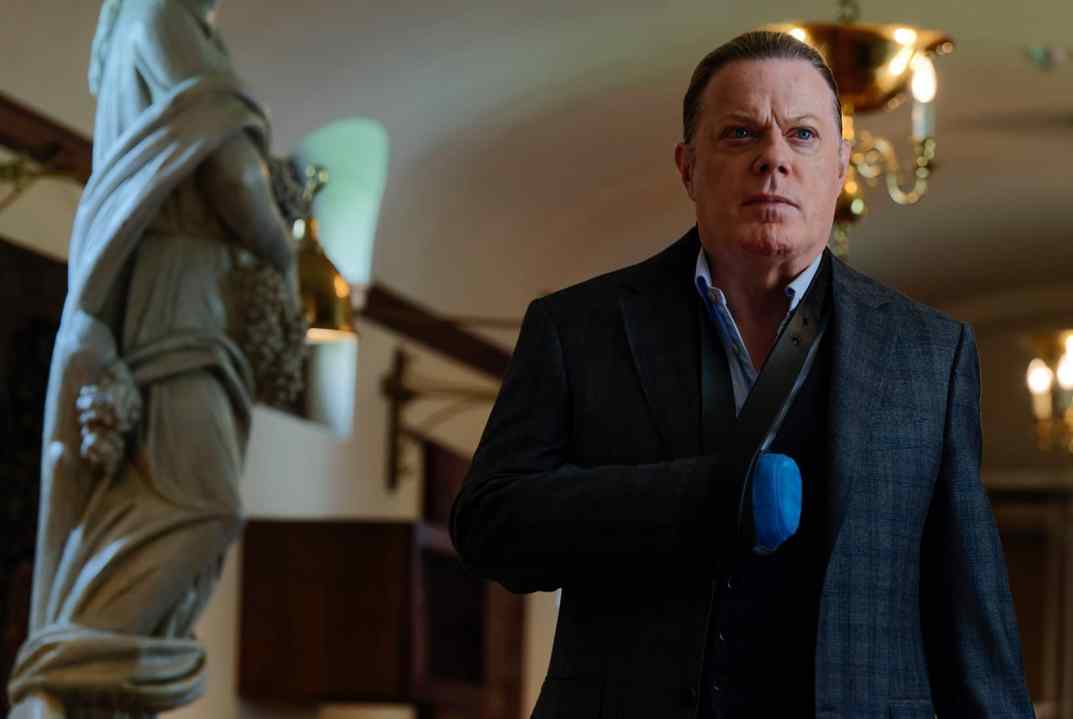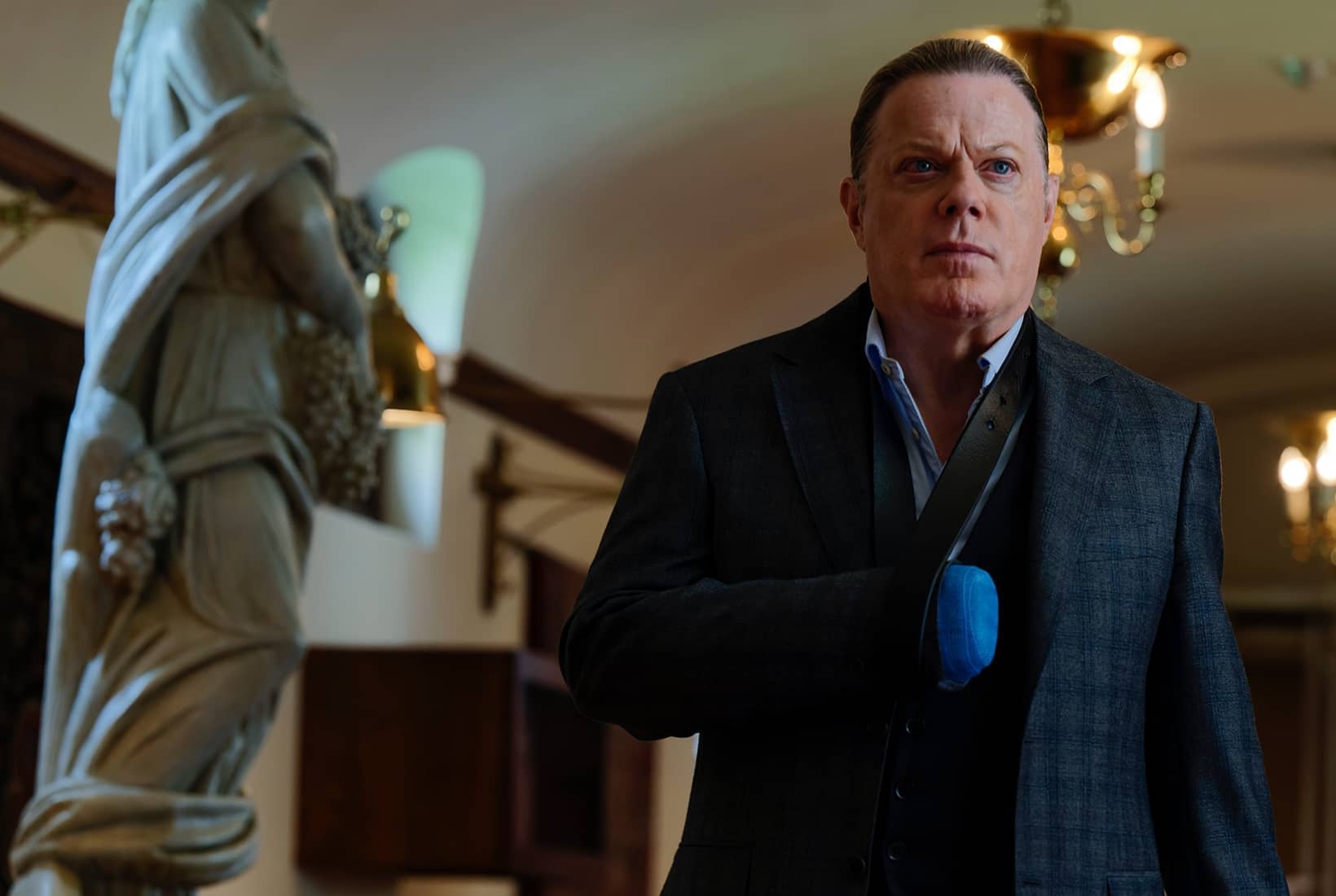If it weren’t for this job I sometimes wonder whether I’d even bother watching TV at all. This mood strikes me particularly in those weeks when I find myself casting round for anything new and vaguely interesting to watch and I end up in front of something as epically dire as Sky’s new Dan Brown adaptation The Lost Symbol.
Brown’s hero Robert Langdon, whom we first met on screen in the The Da Vinci Code, is like Indiana Jones with a charisma bypass. Remember that wonderful scene in the first Indie movie where hunky Harrison Ford is giving a lecture to some besotted female archeology students, and one girl closes her eyes to reveal that she has written ‘Love’ on one eyelid and ‘You’ on another? Well the lecture his 21st-century milquetoast equivalent delivers at Harvard is nothing like that.
Langdon (Ashley Zukerman) is a ‘symbologist’: like something from a large-print, abridged and simplified Umberto Eco novel for readers with a sub-50 IQ. But what his lecture is really about is politically correct indoctrination. He shows slides of the Gadsden flag (the ‘Don’t tread on me!’ flag with the snake on it); nasty right-wing people sporting a cross; more ‘far right’ people making the OK hand sign, which supposedly now signifies white supremacy. ‘When do benign symbols become malignant?’ he asks.
Ooh, Professor, sir, I can answer that one! They become malignant when a pair of right-on scriptwriters — Dan Dworkin and Jay Beattie — get hold of a crappy 2009 novel which predates ‘woke’ and impose on it their achingly tedious progressive spin.
This is about as intellectual as the first episode gets. After that, it quickly plummets into your bog-standard, formulaic Dan Brown storyline in which Langdon is a helpless prisoner of a contrived, all-constraining plot. His academic mentor Peter Solomon has been kidnapped — and if Langdon is ever to see him alive again he must use his crack symbology skills to decode a series of clues which will lead him to a portal, somewhere in Washington, DC, whose whereabouts the kidnappers are eager to discover.
The first big clue — hidden beneath a severed hand — leads him to a secret basement room of the Smithsonian Institute where, accompanied by a typical CIA agent fluent in Latin and a lovable Capitol police officer, he finds a secret wall cavity in which lies a small, incomplete pyramid (Masonic, as virtually everything is in Dan Brown novels), engraved with an indecipherable code. In the process, they are almost crushed by those special Edgar Allan Poe-type walls that close in on you but that you can jam with a piece of wooden furniture which splinters moments after you have sprinted to safety.
But if the evil masterminds need Langdon’s symbological skills to find the lost portal, how can it possibly be in their interests to send him to a room where he is likely to be crushed to death? And if they already know of the existence of this secret room, why use Langdon when they are clearly better informed than he is?
Possibly all will be explained but I shan’t be around to care — not least since, if I did, all I’d be thinking is: ‘Fail, Langdon! Fail!’ That’s because the kidnapped mentor is played so shockingly badly by Eddie Izzard that your only solace is the fervent hope that he ends up being dismembered by the spooky, again-typical-Dan-Brown tattooed man holding him hostage.
I must save my last bit for an apology to all those I misled into watching Midnight Mass, I having in turn been misled by Ricky Gervais into thinking it was a beguiling exploration of what happens to a remote, small-town community transformed by the power of Christian miracles.
In episode three — multiple spoiler alert — it becomes vampire horror. Now I happen to be especially fond of vampire horror (Salem’s Lot; Let’s Scare Jessica to Death; From Dusk Till Dawn; 30 Days of Night; etc.) but not when given the bizarre twist imposed on it by leaden, over-earnest series creator Mike Flanagan.
Turns out that on a trip to Jerusalem the charismatic priest I mentioned in my original review has encountered in a desert cave a winged creature with leathery skin, glowing eyes and hideous fangs which pounces on his neck to suck out his blood. Against all evidence, the priest has mistaken it for an angel and brought it back in a large box to his island community in order to… no I shan’t explain because it’s just too depressing.
As the Fawn said to me as we watched in disbelief: ‘He’s a priest! Surely if he’s going to be good at anything it’s going to be spotting the difference between an angel and a vampire devil?’
The final scene was so nauseatingly mawkish I had to hide behind the sofa screaming to be put out of my misery. This is the problem when obviously non–Christian writers try to do Christianity. They just don’t get it.








Comments